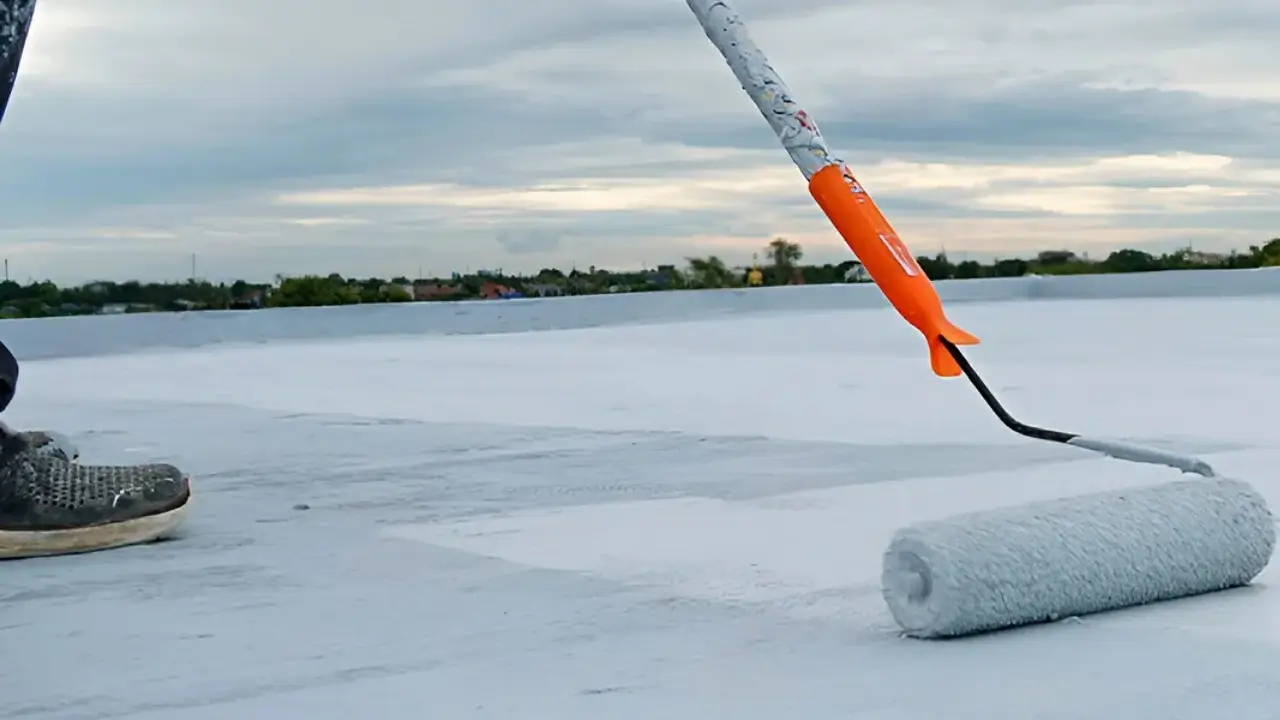
Liquid membrane, also known as fluid-applied membrane, is an innovative waterproofing solution designed to meet the evolving needs of the modern construction industry. Applied in liquid form, it cures to form a seamless, flexible, and highly durable waterproof layer. This versatile material is widely used in areas ranging from rooftops and basements to bathrooms and terraces.
Unlike traditional waterproofing methods, liquid membranes create a continuous, joint-free barrier that eliminates weak points where water might infiltrate. This makes them particularly advantageous on complex surfaces, irregular details, and hard-to-reach areas.
Izolator, Dryfix’s elastomeric resin-based liquid membrane, is a ready-to-use, fluid-applied waterproof coating that adheres easily to various surfaces. Once cured, it maintains its elasticity and provides long-term water resistance.
How Does Liquid Membrane Work?
Liquid membranes are typically formulated using polyurethane, acrylic, bitumen, or hybrid polymer-based resins. The product is applied using a brush, roller, or airless spray equipment. Upon curing through chemical crosslinking, it forms a resilient, waterproof film.
It penetrates into surface pores, seals hairline cracks, and adheres strongly to a wide range of construction materials. Once cured, it offers UV stability, resistance to thermal movement, and long-lasting performance.
Types of Liquid Membrane
Depending on the resin base and formulation additives, liquid membranes fall into several categories:
1. Polyurethane-Based Liquid Membranes
- Excellent elasticity and mechanical strength
- Highly resistant to UV radiation and chemicals
- Ideal for exposed terraces and flat roofs
2. Acrylic-Based Liquid Membranes
- Water-based and eco-friendly
- Cost-effective and easy to apply
- Suitable for light foot traffic areas
3. Bitumen-Based Liquid Membranes
- Preferred for basement walls and below-ground waterproofing
- Protects against rising damp and ground moisture
4. Hybrid Liquid Membranes
(e.g. Polyurethane + Acrylic, or Bitumen + Acrylic)
- Combine the strengths of two technologies
- Balanced performance in terms of elasticity and water vapour permeability
Typical Applications of Liquid Membrane
The versatility of liquid membranes makes them suitable for almost every part of a building:
- Terraces & Balconies
Durable protection against weathering and UV exposure - Roofing Systems
Provides seamless coverage around slopes, gutters, and chimneys - Foundations & Basement Walls
Acts as a reliable barrier against groundwater and moisture - Wet Rooms (e.g. Bathrooms, Kitchens)
Applied beneath tiles for under-tile waterproofing - Metal Roofs & Gutters
Adheres well to metal, timber, concrete, and more - Infrastructure Projects
Ideal for bridges and viaducts due to its flexibility and vibration resistance
Advantages of Liquid Membranes
The growing popularity of liquid membranes is due to their many technical and practical benefits:
✔ Seamless Application
Forms a monolithic layer with no joints, minimising leakage risks
✔ High Elasticity
Accommodates building movement, thermal expansion, and minor cracking
✔ Ease of Application
Can be applied with basic tools, even on complex geometries
✔ Time-Efficient
Faster installation leads to reduced labour costs
✔ Easy Maintenance
Damaged areas can be locally repaired without needing full replacement
✔ Excellent Adhesion
Often bonds well without primer; with primer, adhesion becomes exceptional
✔ Long-Term Durability
When applied correctly, offers a service life of 10 years or more
Key Considerations for Application
To ensure optimal performance, the following should be taken into account during application:
- Surface Preparation
The substrate must be clean, dry, and free from dust, oil, or loose particles. - Priming
A suitable primer may be required, depending on substrate porosity. - Coating Intervals
Usually applied in 2–3 coats, with adequate curing time between each layer. - Application Temperature
Must be applied within the recommended temperature range (typically +5°C to +35°C). - Consumption Rate
Coverage depends on the surface and product type (e.g. 1.5 – 2 kg/m²).
Liquid Membrane vs. Sheet Membrane
| Feature | Liquid Membrane | Sheet Membrane |
|---|---|---|
| Application Method | Brush, roller, or spray | Torch-on or cold adhesive |
| Surface Compatibility | Conforms to complex shapes | Best for flat surfaces |
| Joints | Seamless and joint-free | Contains seams that require sealing |
| Elasticity | High | Limited |
| Repairs | Localised and easy | Labour-intensive and large-scale |
Liquid Membrane Pricing
Prices vary depending on the resin type, package size, UV resistance, and elasticity. As of 2025, a 20 kg container typically ranges from $1,000 to $2,500. Application costs depend on labour, surface preparation, and total product consumption.
Why Choose Liquid Membrane?
Waterproofing is critical to both structural durability and occupant comfort. Thanks to their advanced formulations, liquid membranes offer fast, cost-effective, and long-lasting solutions to water ingress.
The ability to create a jointless membrane, adapt to diverse surfaces, and be easily repaired makes them one of the most preferred systems in modern waterproofing.
Whether you’re planning a new build or addressing leakage in an existing structure, liquid membranes offer a reliable and professional-grade solution.
Dryfix stands with you wherever water poses a threat to your structure.
Because at Dryfix, we don’t let water in — we let trust in.
